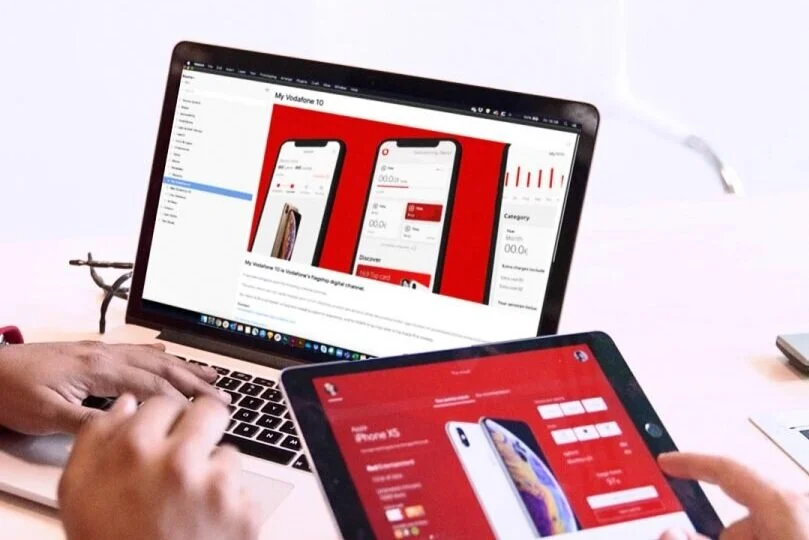Part 02. Design Systems Market Landscape
The market presents many design systems to draw inspiration from, all having strengths and priorities they concentrate on. It’s essential to consider the breadth of your design system offering, who the audiences are, how it works, what value it drives and how it is architected through the entire stack of the business.
This is part two of a five-part series dedicated to building a Design System business case.
Feel free to visit any of the series:
PART 02 - Design Systems Market Landscape
Let’s look at Design System Audiences
Each organisation is of different structures, compositions, and scales. Yet inherently, design system audiences always exist in four domains.
01. Design System Makers
There will always be the makers of design system assets, continuously contributing and utilising the assets. For example, but not limited to:
Content - content modelling, tone of voice, copywriting
Design - design tokens, design components, patterns, and templates.
Engineering - design tokens, front-end components, patterns, and templates.
Test - system coverage in unit, behavioural & visual regression testing
All assets are supported by instructional guidelines and integrated tooling.
02. Design System Collaborators
Audiences that need to influence, manage or utilise the design system without necessarily creating the assets but are involved in the workflows or governance of the system. For example, but not limited to:
Brand - aligning master brand vision, principles, and tone
Marketing - utilising in a campaign and off-site channels
Product - prioritising and enabling value realisation via utilisation or contribution
All collaboration is supported by workflows and governance.
03. Design System Stakeholders & Sponsors
Treating the Design System like a product servicing products requires the cost benefits from Design Systems to be modelled, measured and quantified. Articulating the enabling value supports business owners to realise their digital ambitions. More efficiently and effectively. For example, but not limited to those accountable for cost-centres or P&L spend and targets.
04. Our Customers
Who enjoy a cohesive and seamless digital experience. Resulting in a positive learning experience, repeat visitation, a greater likelihood to complete self-purchase or self-service, and improved brand recognition and equity.
Most in-house design system teams contain design, development, and UX expertise. Many teams reported needing more resources from product/project management, research, and strategy.
Reference: Sparkbox Design System Survey 2021
Leading Market Example
As mentioned, the market presents a plethora of design systems to draw inspiration from. There are certainly sexier and more established design systems out there. However, when showing tangible examples, I like to use these four below. As they present with different priorities and are all successful.
Providing frameworks and a set of tools to help build government digital assets and services more effectively. Special mention to their WCAG 2.0 AA compliance success criteria.
Note: If the Australian government is doing a great job and your company isn’t…check yourself.
Westpac's single source of truth provides everything they need to deliver their brand promises and create consistent, coherent customer experiences faster and with less effort across their entire digital landscape. Special mention to their multi-brand efficiencies.
The Salesforce Lightning Design System (SLDS) provides everything teams need to build scalable Salesforce apps. As a SaaS provider, this is an excellent example of enabling other businesses to utilise existing frameworks rather than re-invent or reverse engineer existing approaches.
What’s different about Encore is that it isn’t a single monolithic thing. It’s a framework that brings Spotify’s existing design systems under one brand—a “system of systems.” A great example of how to promote best practices exciting ways of working to acquire top industry talent.
Industry Case Studies
When you start modelling your design system business case's benefits case, you will need to leverage your hard and soft metrics mentioned in Part 01. Design System Problem Space. However, if you find such measures don't exist in your organisation, you may need industry examples. The problem I have found is that there is not yet an industry benchmark or index. Case studies generally present some outrageous gains that can be hard for parties releasing funding to both a) accept without proof of measure or b) wear the responsibility of the targets. So although these can support the Design System funding narrative, appreciate the multipliers need context to your situation.
IBM iX design teams saw a 50% increase in workflow efficiency when they started using design systems.
LinkedIn saw designer efficiency increase by 150% after implementing a design system.
Teams at Vodafone saw a 40% increase in design productivity, plus faster, easier onboarding for new members.
Some barriers to consider
The market generally presents positive stories for the benefits realised by Design Systems. But two common barriers are critical to design system success.
It takes both an actual cultural change to ensure adoption and maintenance
Dedicated design system capacity is directly attributed to success stories
52% of unsuccessful design systems see adoption as their primary reason for failure
46%
Centralised of in-house respondents have a team dedicated to the design system, based outside of the product-and-features team structure.
26%
Solitary of in-house respondents have one internal, pre-existing team that created a design system and owns it, though other teams also use the design system.
24%
Federated of in-house respondents have individuals from various teams inside the organisation manage the design system, and each of these teams uses the design system.
We need to start considering the scope and possible releases of your design system ambitions
In the following article, Part 03. Design System Assets Evolved, we will explore the possible breadth of design system scope to inform your solution intent and illustrate hypothetical roadmaps to quantify potential tranches of funds.
Continue reading the design system series:







